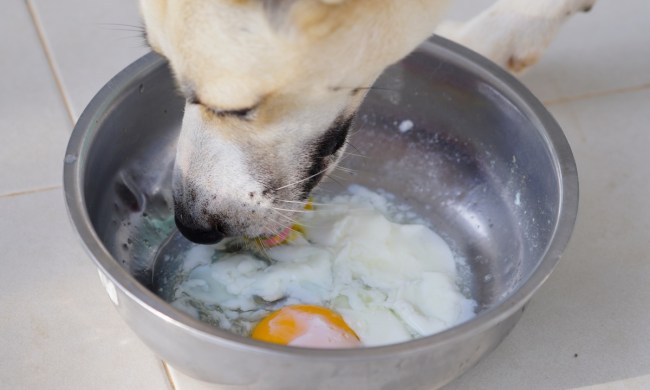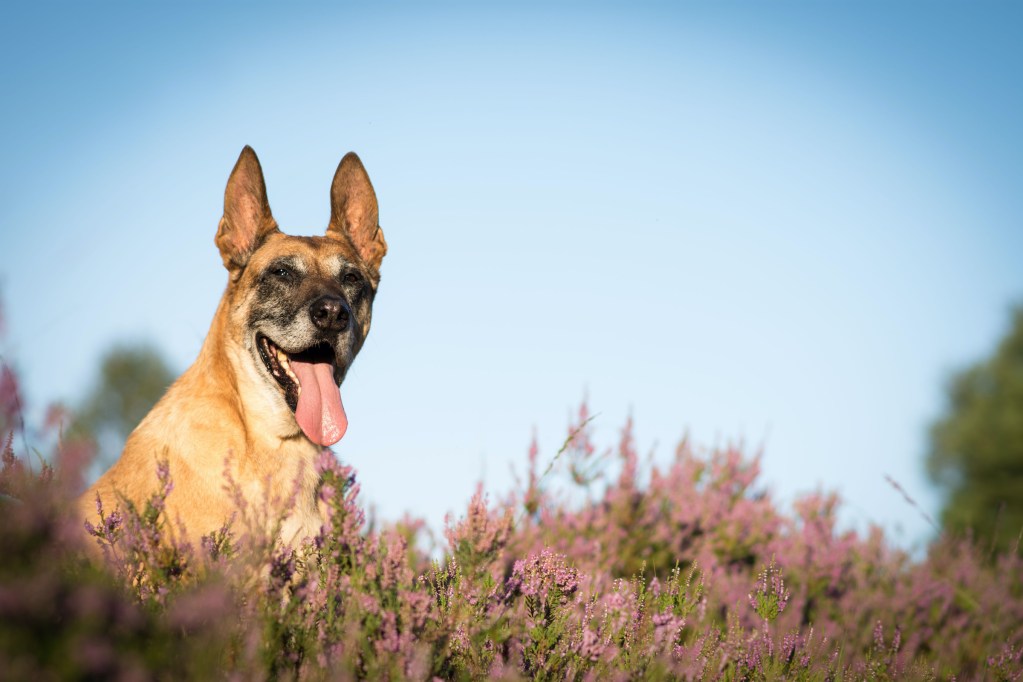
If you’re considering opening up your home to a new four-legged family member, there may be a lot of thoughts swimming through your mind. This is totally normal. Bringing home a new pet is a big change, so it’s only natural (and responsible) to think through every aspect of the decision before you commit. One thing you may be considering is which dog breed would be best for your home. Although you may not be able to hand-pick your perfect breed when adopting a pet from a shelter, knowing a bit about the most common dog breeds can help you make an informed choice.
The Belgian Malinois is a breed often seen in cities, suburbs, and farms, though it’s often mistaken for an entirely different dog — the German shepherd. While they are related, these breeds are completely separate from one another. Familiarizing yourself with Belgian Malinois characteristics and traits will help you decide whether this may be a breed for your family, but first, we’ll have to ask — is a Belgian Malinois a good family dog?
Let’s find out everything there is to know about this strong and loyal dog breed.
Belgian Malinois breed characteristics
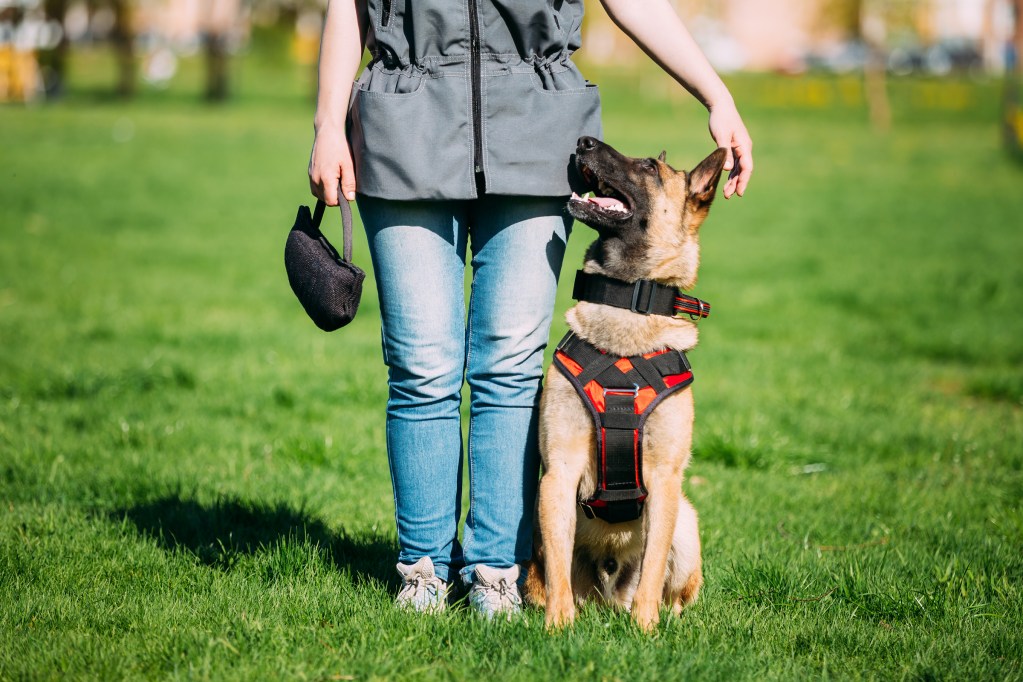
Belgian Malinois are large, high-energy dogs that make excellent companions and running partners. They stand about 24 to 26 inches tall when fully grown, and male Malinois can weigh over 80 pounds. Despite their intimidating size, though, these vigilant, eager dogs are also excellent with families and in homes. However, they are far too large and energetic to be apartment dogs.
“Mals” are known for their proud demeanor and eagerness to please, which makes them excellent for obedience training, agility, and other activities that combine physical and mental challenges. In fact, these dogs need activities and jobs in order to thrive in any home, or you could be dealing with a lot of behavior issues. You can expect to exercise an adult Malinois for at least an hour each day.
According to the American Kennel Club, this is a relatively healthy dog breed, though large dogs can be at risk for hip dysplasia. Like any dog, they require regular brushing, veterinary checkups, and dental care, though, due to their bigger size, you may spend more time on coat and nail care.
Belgian Malinois compared to German shepherds
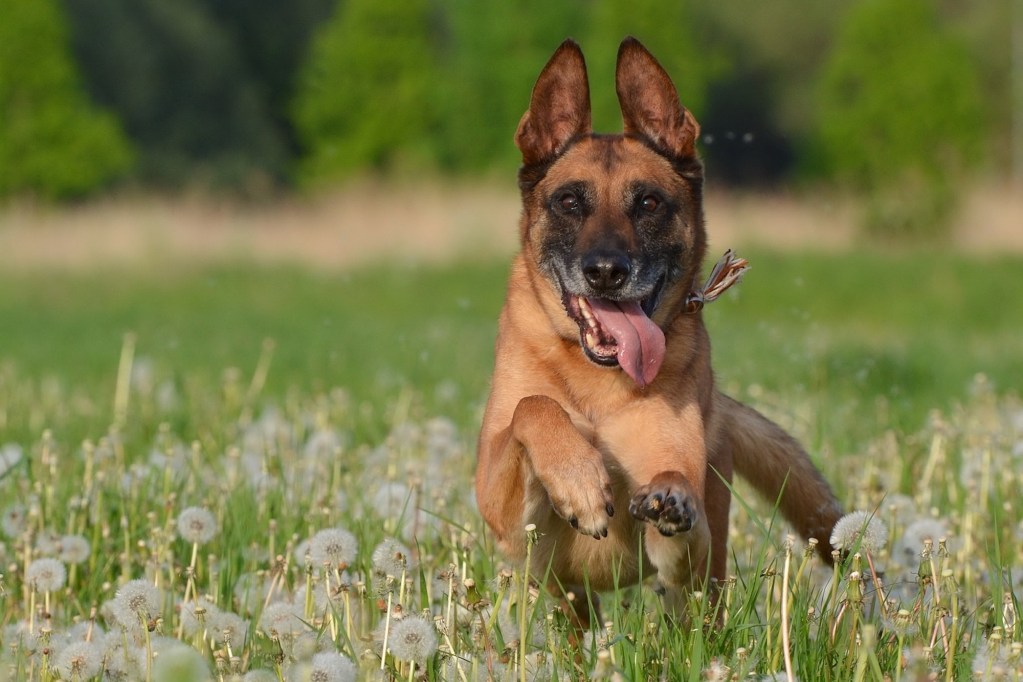
While it’s safe to say that this breed is quite similar to the German shepherd — they’re both members of the Herding Group, after all — there are plenty of characteristics that help Malinois stand out. When looking at the dogs side by side, for example, you’ll see that the Malinois ears are more pointy and triangle-shaped than German shepherds’. Malinois are also lighter than German shepherds and tend to have a more square-shaped body.
When it comes to behaviors, though, these dogs have more in common than they do differences. It’s easy to see why they are commonly mistaken for one another, especially when they share similar lines of work. From herding on farms to working with police officers — these dogs can do it all.
Is a Belgian Malinois a good family dog?
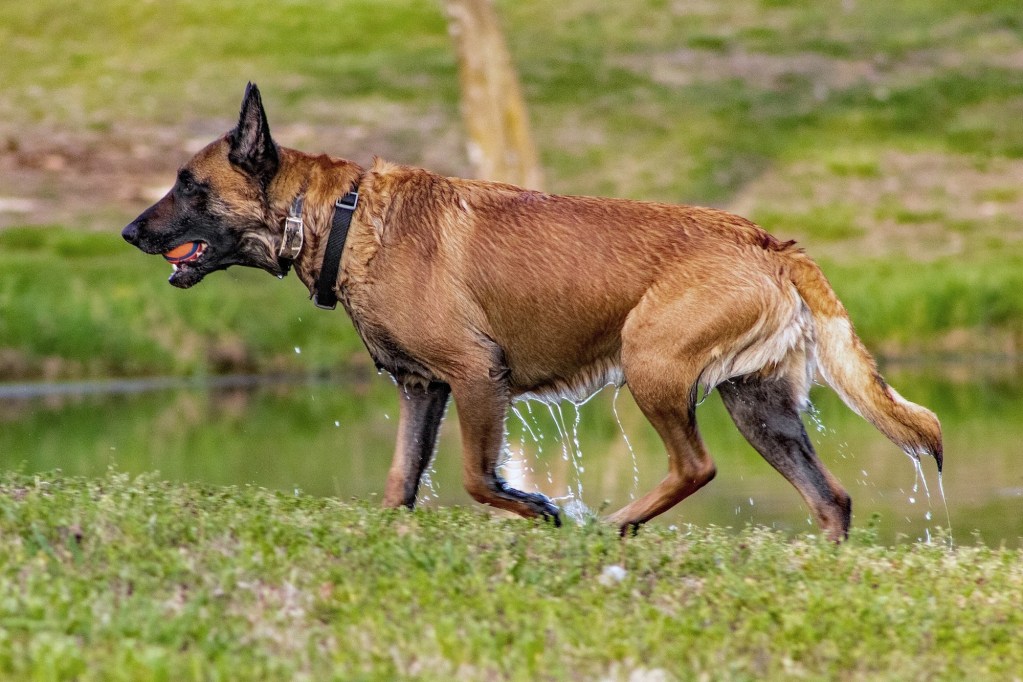
The Belgian Malinois is one of four sheep-herding dogs developed in Belgium to be protectors of farms, flocks, and families. They immediately gained popularity because of their loyalty and love of work, later becoming popular companion dogs for military and police officers. In fact, it was Cairo, a Belgian Malinois, that “played a critical role in the 2011 raid that took down the world’s most notorious terrorist, Osama Bin Laden.” Now that’s impressive!
Despite their “tough guy” appearance, these dogs love to use their bravery, strength, and loyalty to keep their homes and families safe. Many Mals will take on a watchdog role, whether you train them to or not, but it’s important to keep them socialized and trained to avoid unwanted aggression or alerting toward guests. Remember, these dogs were bred to herd sheep, so they can sometimes chase, herd, and nip at the legs of other animals and small kids. This is normal canine behavior, but dogs can be less likely to act on these impulses if they are mentally and physically satisfied.
When your Malinois isn’t getting in a workout or finishing a job, they will likely want to be by your side. Their loyal personalities let them bond deeply with members of their pack, so don’t be surprised if you have to buy a dog bed for each room of the house. They may follow one special person from room to room, or they may try to herd everyone back to the same room so their pack can be protected in one place.
Belgian Malinois are some of the most hardworking dogs out there, but that doesn’t mean they can’t be great family dogs, too. An active family with a large home and yard will be the best fit for this breed of dog, though an older Mal may enjoy a more leisurely life, too. Every dog is different, so breed standards and expectations will only get you so far!



